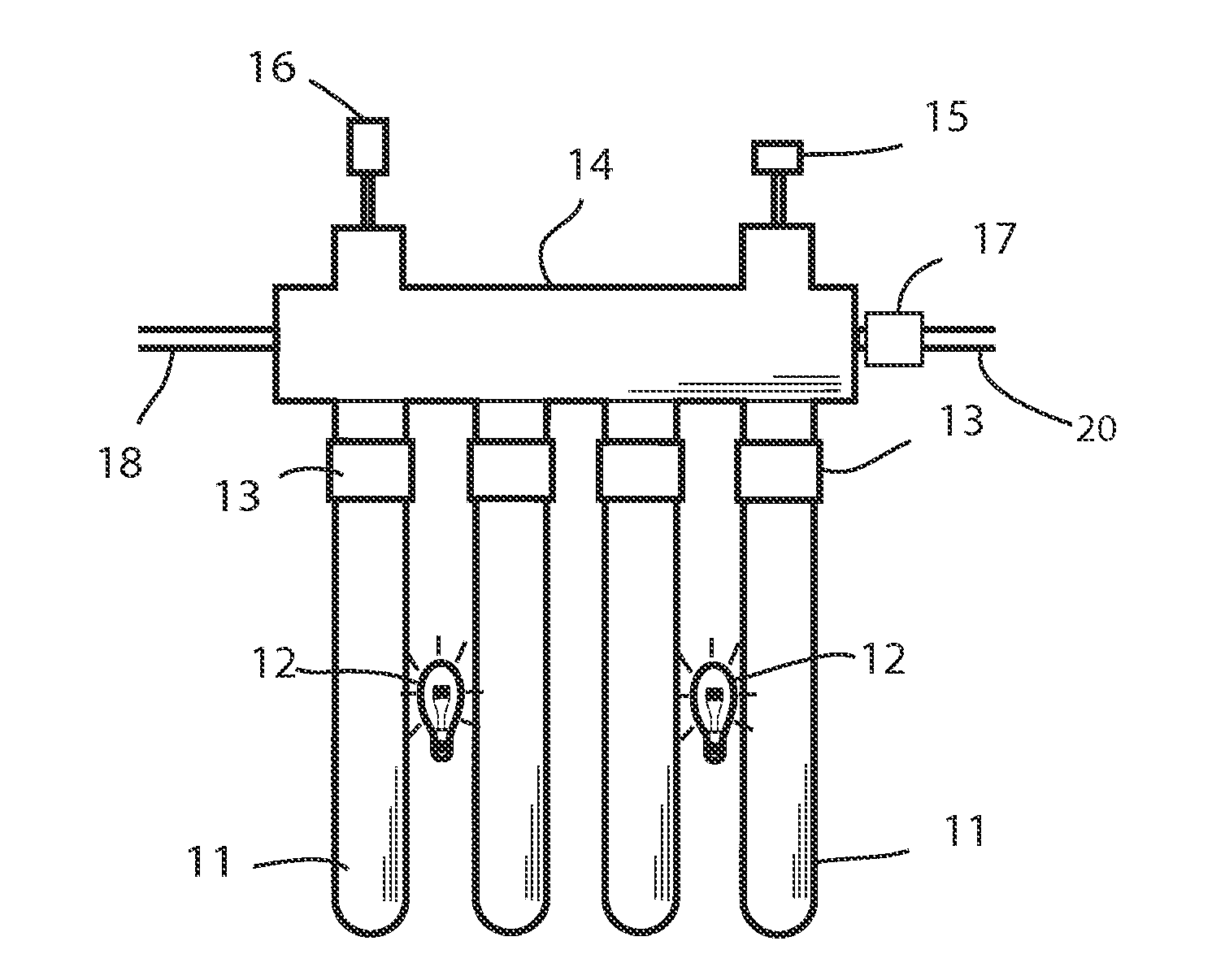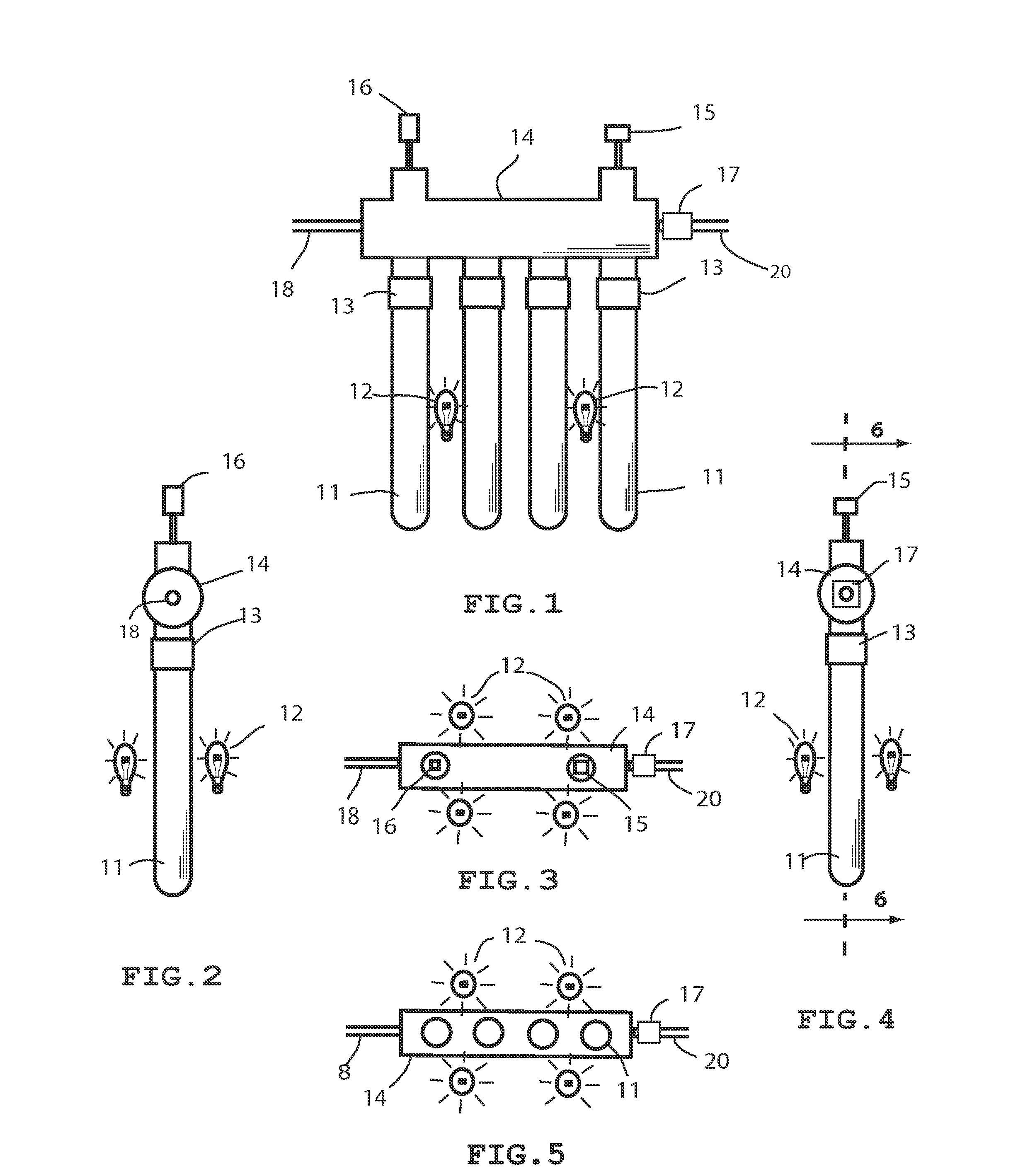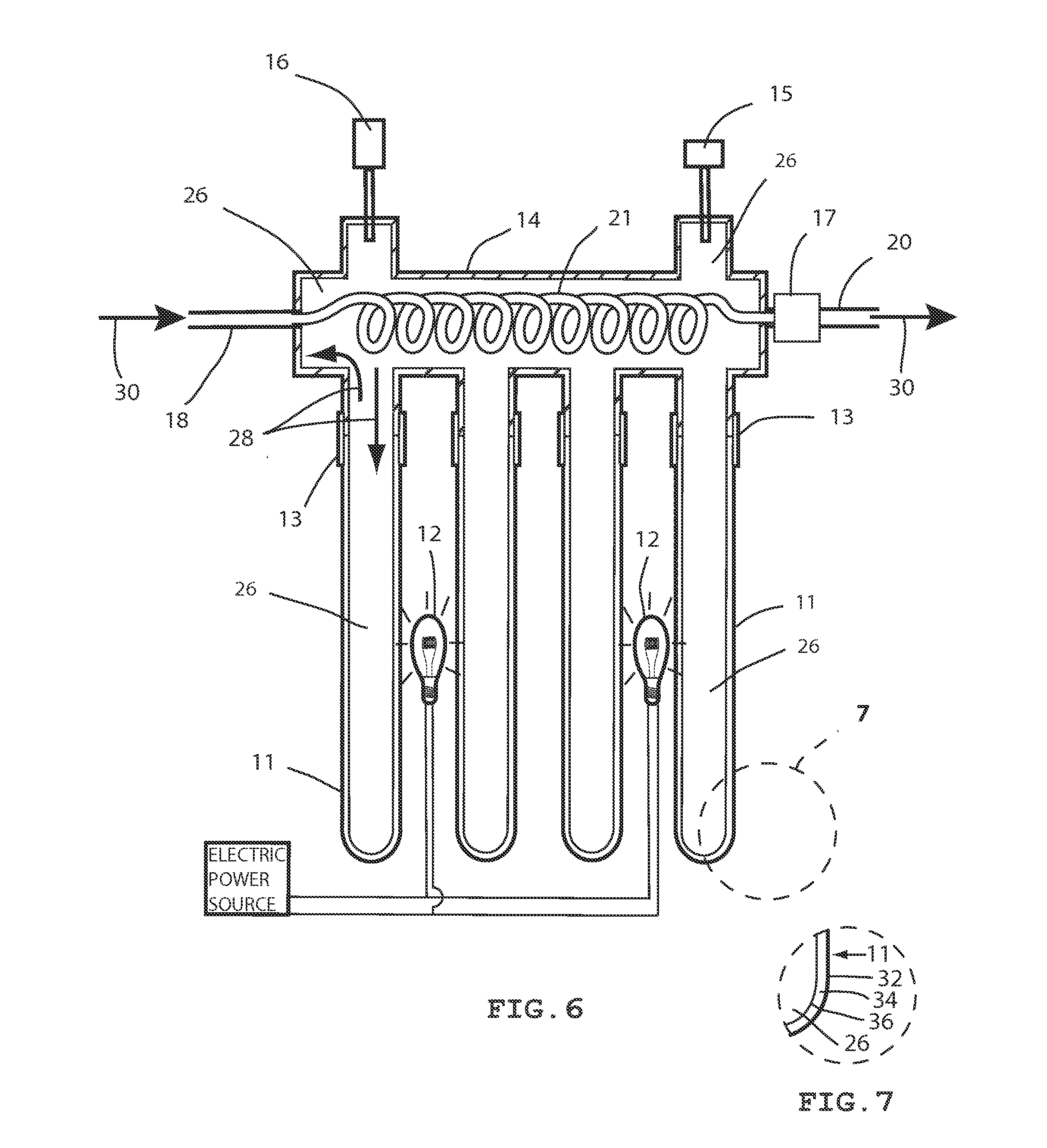Artificial light and evacuated tube boiler
- Summary
- Abstract
- Description
- Claims
- Application Information
AI Technical Summary
Benefits of technology
Problems solved by technology
Method used
Image
Examples
Embodiment Construction
[0021]Referring now to the drawings and more particularly FIGS. 1-13. Shown are embodiments which comprise one or more evacuated tubes (11) and a header (14). Also illustrated in FIGS. 1-13 are one or more artificial light sources (12) in proximity to the evacuated tubes (11). FIG. 6 shows a cross section of the header (14) and evacuated tubes (11) forming an internal volume (26). FIG. 6 also shows a first heating fluid and its direction of flow represented by first heating fluid arrows (28) and hereafter referred to as the first heating fluid (28). FIG. 6 shows a second heating fluid and its direction of flow through the conduit system represented by second heating fluid arrows (30) and hereafter referred to as the second heating fluid (30). The internal volume (26) contains the first heating fluid (28) and the header conduit (21). The header conduit (21) conducts a second heating fluid (30) from influent conduit (18) through the header (14) and first heating fluid (28) to the effl...
PUM
 Login to View More
Login to View More Abstract
Description
Claims
Application Information
 Login to View More
Login to View More - R&D
- Intellectual Property
- Life Sciences
- Materials
- Tech Scout
- Unparalleled Data Quality
- Higher Quality Content
- 60% Fewer Hallucinations
Browse by: Latest US Patents, China's latest patents, Technical Efficacy Thesaurus, Application Domain, Technology Topic, Popular Technical Reports.
© 2025 PatSnap. All rights reserved.Legal|Privacy policy|Modern Slavery Act Transparency Statement|Sitemap|About US| Contact US: help@patsnap.com



